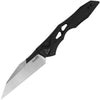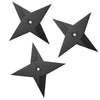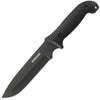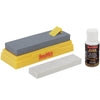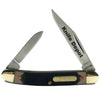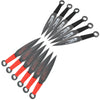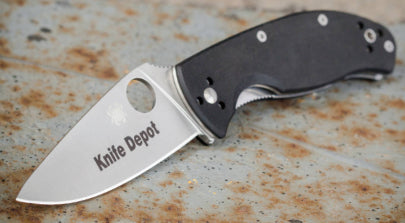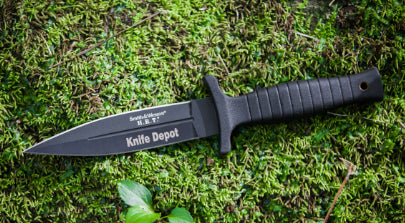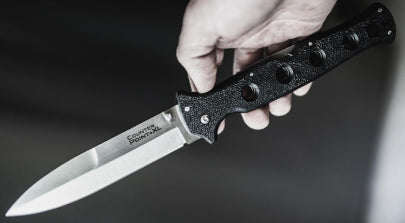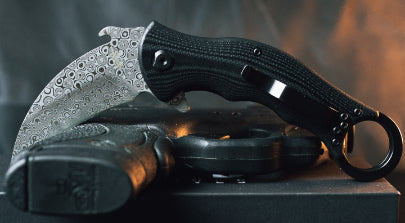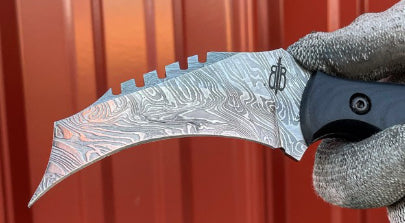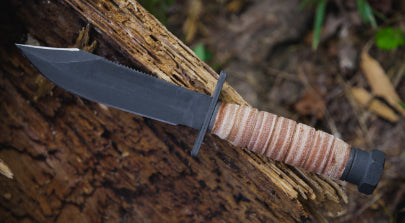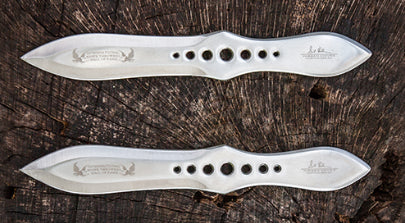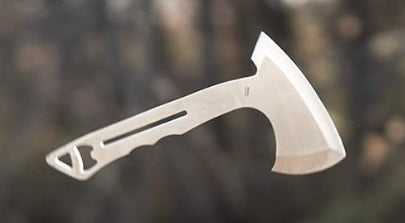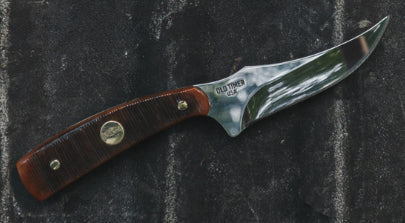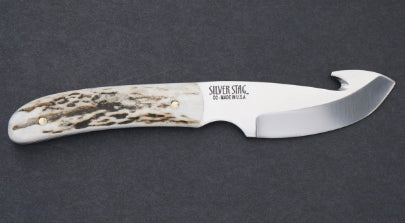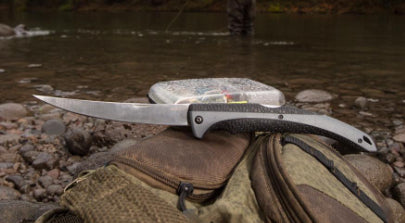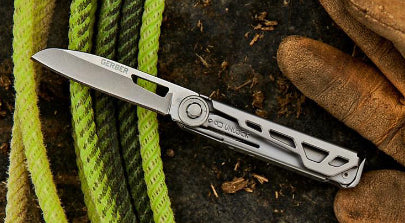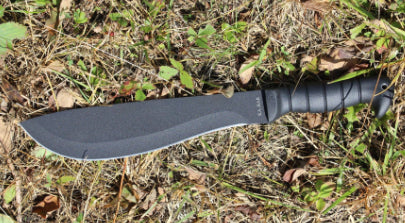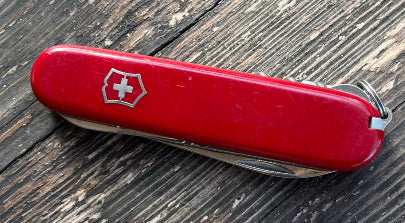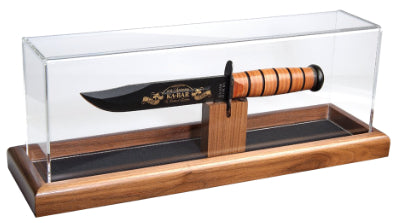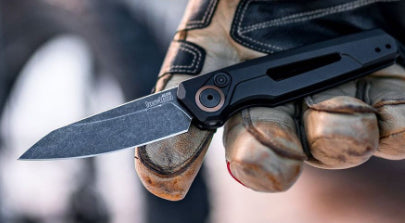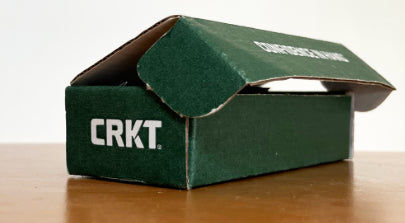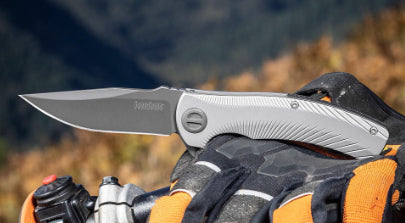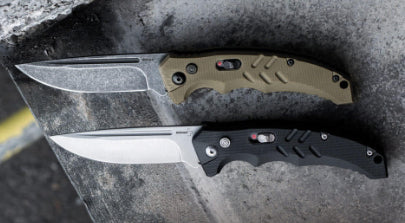What is a Karambit?

The Karambit is an impressive blade known for its utility in a wide range of situations and scenarios. Precise, efficient and tactical, this fixed blade knife features a uniquely hoked or curved blade accompanied by an ergonomically designs handle, often with a safety ring attached at the handle’s butt.
Where Do Karambit Knives Come From?
The first model that would serve as the foundation for modern Karambit Knife styling originated in the 11th century in Indonesia. There it was used as a utility blade frequently employed by farmers and field workers.
As Indonesia’s trade industry thrived, the Karambit made its way across Southeast Asia, Malaysia and the Philippines. Today it is a favored blade the world around.
Styling
Taking a note from nature itself, the knife was traditionally inspired from the claw of the mighty and fierce tiger. This design was ideal for ripping, tearing and slicing. All with minimal effort and maximum efficiency.
Modern takes on this traditional classic offer a robust selection of various stylings. Today, the Karambit can be found in fixed and folding blade options, and with various cutting surfaces and edge types
Popularity
The Karambit is a valued blade among fieldsmen, outdoorsmen, recreational collectors, and the tactically minded or self-defense focused individuals. It delivers precision cust with a high degree of edge retention and is suitable for a broad range of tasks. This versatility makes the blade one that is popular across a broad segment of the knife purchasing market.
Karambit Uses
What was the Karambit originally used for?
Traditionally, the Karambit was used as a tool for farming. Its versatility and ability to rip, cut and slash with little effort was ideal for the broad range of tasks farmers faced daily. IN this sense the Karambit was the EDC (‘every day carry’) blade of choice.
Karambit Functions
The Karambit is most typically used in a hooking or slashing motion, allowing the bearer to effortlessly wield the blade in a fluid motion that takes advantage of the knifes design and ergonomics.
When a finger is placed through the ‘safety ring’ the knife can also be used with a punching motion. Some blades include a reinforced or overstated butt that is ideal for hammer strikes.
Are Karambits Combat Knives?
The Karambit is ideal for self-defense and tactical situations. The blade’s fluid design makes it highly efficient in situations where speed, precision and agility are required. The knife is conducive to attacking and defending from a variety of positions and angles, making it versatile in combat scenarios.
The knife’s safety ring is also combat proficient, making it exceedingly hard for an attacker to disarm the knife’s holder, while also acting as a blunt force object for hammer strikes.
Utility Purposes
Similar to the value farmers of old saw in the Karambit, modern-day users are taking advantage of the knife’s multi-use capabilities. The ergonomic grip and safety ring enhance grip under even the most slippery or challenging weather conditions, while the blade’s design is conducive to fast and efficient slicing for repetitive tasks without wearing out the user.
From the field to warehouses and construction sites, the Karambit is a welcomed tool to have on hand.
Cutting Straps and Ropes:
The curvature of the knife’s blade makes it perfect for ‘hooking’ around straps and ropes.
Cutting Dense Fabrics
Dense or woven fabric is notoriously difficult to cut through, usually requiring a sharp set of scissors or a razor blade. However, the Karambit’s design provides the right angle, fluid motion, and grip to apply pressure in a way that seamlessly cuts through tough fabric.
And this is just scratching the surface of the knife’s multitude of uses.
Who Uses Modern Karambit Knives?
Due to its versatility, the modern Karambit is preferred among a wide range of individuals across a multitude of professions and hobbies.
- Sportsmen
- Outdoorsmen
- Law enforcement
- Paramilitary
- Military
- Farmers
- Construction workers
- First responders
- Knife enthusiasts and collectors
- And more…
Karambit Grips
The grip of a blade is one of the most important aspects of wielding a knife effectively, efficiently and safely. The right grip can make easy work of chores, reduce wrist and hand fatigue, or help you fend off an attacker before they get the chance to do worse to you.
In the right hands, and with the right grip, watching a skilled Karambit wielder is akin to watching a rhythmic dancer or Kung Fu master. The way the curved blade moves in fluid motions and circles can be hypnotic, lending to the knife’s use as a defensive or tactical weapon.
The Reverse Grip
The ‘reverse grip’ is arguably the most popular way to use this knife. It is best employed in defensive or combative situations. This grip may also be referred to as a: Quickdraw, combat or tactical grip.
To use the reverse grip, position your hand with the palm facing up and flat. Place the knife handle on your palm with the spine of the blade facing towards your body. The ring should face to the right with the tip pointing away from yourself. Next, slide your index finger into the safety ring (if your knife has one) and then tightly close your fingers around the handle to secure a solid grip.
The Forward Grip
This is the second most popular way to use a Karambit. Ideal for everyday use, utility purposes and chores that might require a greater level of precision and control.
To employ this grip, position your hand palm up and flat. Place the knife handle on your palm with the spine facing towards your body. The ring should face left, with the tip pointing away from your body. Next, slide your pinky finger through the safety ring and close your hand around the grip.
This position allows for greater control, better precision, improved stability and leverage, but lacks maneuverability and reach.
The Extended Grip
Less frequently employed, the extended grip is an advanced grip that involves rotating a Karambit held in the reverse-grip vertically in a counter-clockwise motion. The blade should rest across the back of the individual’s hand, with the ring snugly secured on the index finger.
This grip is best suited when leverage of upward motion and/or additional reach is required, such as when you need to snag something just out of reach.
Final Thoughts About the Karambit
The Karambit is a unique and versatile knife that has stood the test of time well. Although its modern-day applications vary widely from its original intent, it is this versatility that makes the blade so popular and one of our Best Sellers.











